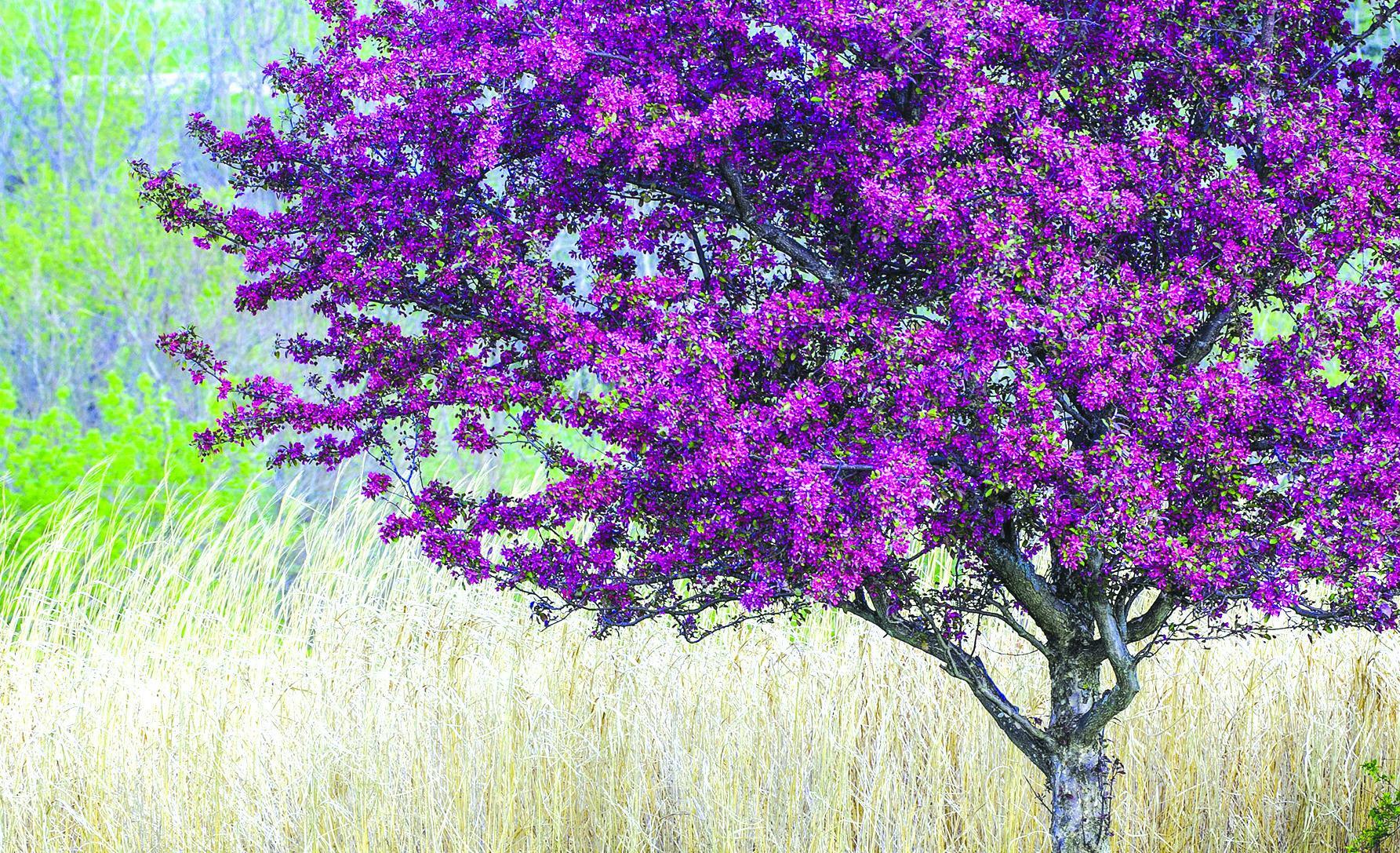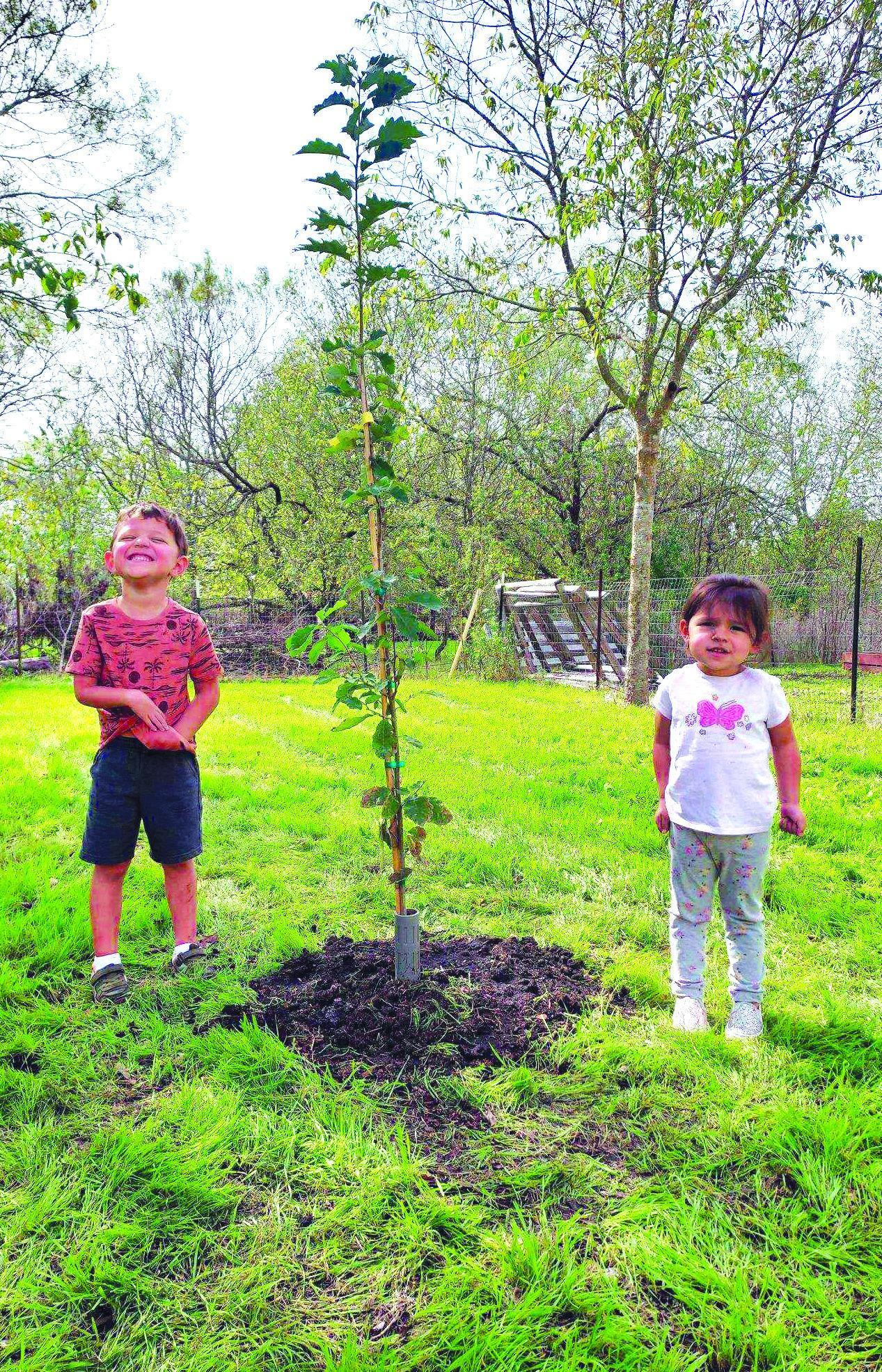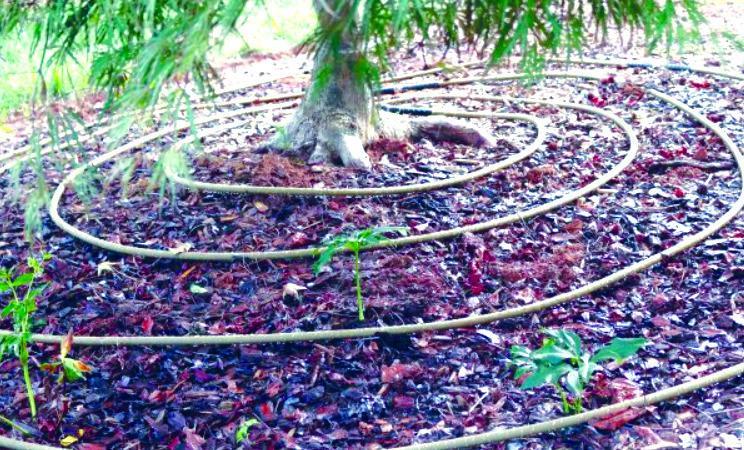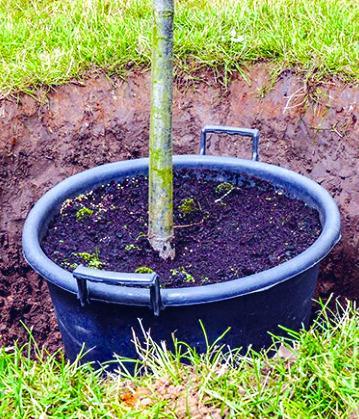



Top, Always follow the best practices when planting.
Photo from Metro Creative
Far left, J. C. and Ava Ubernosky stand with a newly-planted Chinkapin Oak they received from the Community Tree Giveaway.
Photo by Jason Ubernosky
Above and left, the best time to plant a tree is during its dormant season, which is November through January.
Photos submitted by the Hays County Master Gardeners
Planting a Tree
On the sunny, extremely hot days of our Central Texas summers, we all realize how much we value our trees. In addition to their beauty, trees provide welcome shade and have a cooling effect on our atmosphere. Planting a tree is one of the more costly additions to our landscapes, so we need to follow best practices to achieve our goal of a healthy tree.
November through January, when trees are dormant, is a good time to plant. Be sure to choose the type and size of tree that will work in your space. Small trees need about 60 square feet to grow, medium trees need 120 square feet, and large trees require 180 square feet. Don’t plant a tree within 15 feet of a house or power lines and be sure to locate any underground cables.
We all love our Live Oaks, but it is best to have a diversity of trees in our yards. There are several beautiful trees which are native to Texas and have also been named Texas Superstars. This designation means that the trees are drought- and heat-tolerant as well as disease resistant. The Lacey Oak is a small oak tree (25 ft.) which has bluish green leaves and small acorns. The Possum Haw Holly is another small tree (10 - 15 ft.) which has showy red or bright orange berries in the fall and winter. A medium sized (30 - 45ft.) tree that does well in our area is the Mexican White Oak, which was just named a Superstar in 2023. The Chinkapin Oak is a large (50 - 60 ft.) member of the white oak family native to our area. In addition, there are several other non-native trees which perform well in our part of Texas. Some of the more popular ones are crape myrtles, Burr Oaks, Arizona and Bald Cypress and Big Tooth and Shantung Maples.
For your purchase, select a quality nursery that sells native plants and check the tree’s root system before buying. Lift the tree out of the container to see if the roots have hit the side of the pot or are circling. Circling roots will cause issues in the tree’s ability to take water into its vascular system, which can result in tree failure. Word to the wise, trees in a 10-gallon pot will catch up to those in larger pots in about two years. They also handle the stress of being transplanted more easily than larger trees.
Before planting, water the root ball of the tree and dig your hole as deep as the top of the root ball but three times as wide. Place the tree in the center of the hole and fill back in with the original soil, breaking up clumps and removing rocks while eliminating air pockets. Water slowly and deeply. Beginning five inches from the trunk of the tree, mulch with two inches of organic matter, moving outward toward the canopy (as much as 5 ft.). Invest in a drip irrigation or soaker hose and place it in a circular pattern around the tree to provide gradual, deep watering. New plants will need daily watering for two weeks and then two to three times a week until the dormant season. Continue to water two to three times a month during the growing season for three to five years. It is helpful to water thoroughly before a freeze. Once established, trees are mostly self-sufficient.
Adding trees to your space is an investment of money, time and energy. However, a healthy tree adds majesty as well as shade to our environment and is well worth the effort.











